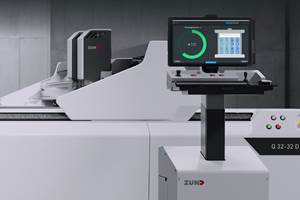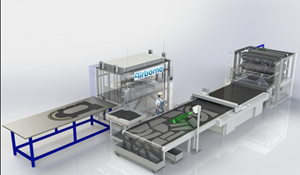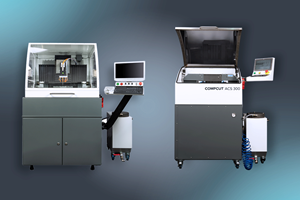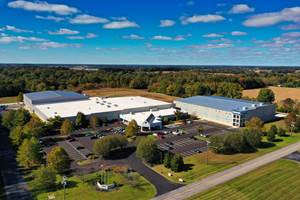Improving one-piece aerostructures by automating preforming
IAI’s fully automated “one-shot” RTM production line cuts helicopter seat cost 30% vs. hand layup prepreg.
Israel Aerospace Industries (IAI, Tel Aviv, Israel) has produced crashworthy seat structures for aircraft since 1978. Its turnkey service includes design, certification and manufacturing. IAI has developed a reputation for producing lightweight seating through the use of composites, and developed efficient production via RTM but now augments both with automation.
“The idea was to implement ‘one-shot’ technology, manufacturing a part in a single, automated process,” explains IAI development program manager Hary Rosenfeld. IAI already had acquired expertise in resin transfer molding (RTM) during development of the 2.8m-long, one-piece composite rudder it now produces for the Gulfstream G250 business jet (see “RTM showcase: One-Piece Rudder”). “We know how to design parts for RTM,” says Rosenfeld, “but now we wanted to automate the preforming as well.”
For a test case, IAI selected an in-process composite helicopter cockpit seat. “We chose a helicopter seat because we already had this part designed in prepreg, so we could compare the weight and cost for parts made with prepreg and autoclave cure vs. the consolidated design using automated RTM.” The resulting seat reduces cost by 30% vs. its prepreg predecessor while maintaining critical strength and crash performance, and shaving weight by 7%.
Part and process design
Rosenfeld points out there is a strong relationship between the design of the automated production line and that of the part. “The part geometry was challenging with regard to creating the prepreg layup,” he explains. “When you try to fold the prepreg material into a corner, it wants to wrinkle. So, you have to cut darts. But these reduce the strength of the part and you have to then compensate for this.” RTM offered improvements by moving away from prepreg layup, but there were new considerations. Forming was still required, but using dry fabrics instead of prepregs improved drapeability, reducing the need for manipulations such as darts. The process was also amenable to automation, but Rosenfeld notes, “we had to keep in mind what a robot can do.”
A key aspect of composite aerostructures design is certification. “We must certify the part and the production line,” says Rosenfeld. “Most parts are certified together with the airplane they fly on. However, this part was developed independent of a specific aircraft program, but instead as a retrofit that can be applied to many different types of helicopters.” Certification mandated testing of materials and finished parts. It was completed by the Civil Aviation Authority of Israel (CAAI) and recognized by the Federal Aviation Admin. (FAA, Washington, DC, US) through a reciprocal agreement.
Thus, design began. “We defined design allowables for the two different laminates we used,” says Rosenfeld. A satin weave glass fiber fabric and a satin weave carbon fiber fabric from Hexcel (Stamford, CT, US) were selected, along with Prism EP2400 epoxy resin from Solvay Composite Materials (Alpharetta, GA, US), which meets aircraft/rotorcraft flame, smoke and toxicity (FST) requirements. “The epoxy resin is cured at 180°C to meet strength requirements,” he notes, adding, “There are resins that can cure at lower temperatures, such as 130°C, but these have a longer cycle time.”
After materials were characterized, the work of detailing the automated manufacturing process began.
Automating preforming
A key partner in IAI’s development of this new process was composites automation specialist Techni-Modul Engineering (TME, Coudes, France). IAI had been working with RTM equipment supplier Isojet (Corbas, France), which then recommended TME as a toolmaker for RTM. Isojet and TME are part of Composite Alliance Corp. (CAC, Dallas, TX, US), which provides composites manufacturing solutions ranging from single tooling and equipment to automated work cells and complete turnkey systems (see ”Automated preforming: Intelligent automation in pick-and-place systems”). “We completed the RTM tool development and were very satisfied,” Rosenfeld continues. “When we were ready to develop the preforming automation, we decided to keep working with TME. They helped us to define the design and requirements for the production line and suggested automation possibilities.”
Automated cutting tables were well integrated into the IAI production flow and cutter operations had been optimized by implementing Plataine Technologies’ (Waltham, MA, US and Tel Aviv, Israel) Total Production Optimization (TPO) software (see ”Optimizing composite aerostructures production”). The question was, ‘What type of equipment and process steps were needed between cutting and RTM?’ “We looked at the cutting system and what type of communication would be required,” explains Marc-Ruddy Thimon, director of sales for CAC. “The next steps would include automated layup, using a pick-and-place robot and application of plies onto a preforming tool, followed by debulking/compaction where heat and vacuum are applied.”
In the solution developed by IAI and TME, a cutting table and single robot are synchronized via a central control unit. Rosenfeld explains: “The robot picks up plies in a predefined sequence per the design: Two glass fabric plies (face-up and face-down) and two carbon fabric plies (face-up and face-down), which achieve a symmetric laminate.” The synchronized system changes the rolls of fabric automatically as needed to keep the production line running. The system is set to cut a number of “boards,” which contain cuts (pieces) from the same roll, according to the specific layup stage. The number of cuts within a “board” varies between four and 30, depending on the layup configuration as defined per each layup stage. The cuts are nested to achieve maximum material usage and minimize waste. The fabric is also coated with thermoplastic powder to aid preform consolidation.
The robot then places the cut plies onto the heated mold to achieve a 3D shape. However, there is an important bit of innovation here: “We have developed specialized end-effectors that operate like hands,” explains Thimon, “allowing 2D materials to be folded and formed into complex-shaped areas like corners.” As part of the preform building process, periodic vacuum debulks are performed with a reusable membrane. Debulk of prepregs with the same membrane was an established step in the prepreg seat process. IAI found that it also worked well to consolidate the thermoplastic-coated fabrics into a high-quality preform.
The single work cell robot, with end effector now changed to trimming head, is then used to trim the preform to achieve a net-shape part. The trimmed preform is manually transferred to the bottom mold in the RTM press. “We apply vacuum and begin resin injection, using the Isojet injection machine,” says Rosenfeld. “Both temperature and pressure are increased in the mold, reaching 180°C and a pressure of 6 bar during a 2-hour molding cycle.” The mold is cooled to 50°C, opened and the finished part is removed. The cycle time, including injection and mold cleaning, takes about 7 hours.
“Intelligent” automation
That automated preforming and RTM have succeeded in cutting seat cost vs. autoclaved prepreg is, perhaps, an obvious outcome, but the source of the 7% weight reduction? That was not so obvious. According to Rosenfeld, “This is due to very accurate plies. We optimized the part design for RTM, so there is not as much overlap in ply location and less material wasted. You also don’t have to factor in manual layup errors, so this reduces extra material as well.” He explains that the manual layup process has inaccuracies almost every time, but the robot is very predictable and less prone to errors.
Part of what makes the robot so accurate is CAC’s “intelligent automation.” “We integrate a camera into the robotic arm,” says Thimon, “so that vision inspection is completed while preforming operations are ongoing. When you unroll material, it will check fiber orientation. It will also inspect during pick-and-place layup for fine positioning of the ply onto the tool/preform and for other defects in this part of the process, such as missing plies and incorrect fiber orientation.” IAI has worked with CAC to validate the inspection results. “It compares the visual images taken by the camera with the computer design file and shows any deviation,” says Rosenfeld. “CAC has developed a very good algorithm for this, and we have verified how well it works.”
Although cycle time has already been reduced to one completed RTM seat per 8.5-hr shift, he believes this robotic inspection can eventually further reduce manual inspection times for even faster production. This automated RTM process also produces net-shaped parts with a high-quality finish on both sides, so the only post-molding operation is drilling a few holes. “We will also keep looking at newer resins that cure more quickly, like in automotive,” notes Rosenfeld.
Related Content
ZCC Zünd Cut Center ushers in enhanced digital cutting automation
ZCC V.4 supports operators with several new smart, intuitive digital cutting functions throughout the composite material handling workflow.
Read MoreAirborne to supply composites cutting/kitting equipment to Airbus Helicopters
Fully digital Kit by Light systems will enable faster, simpler and more efficient composite ply management at Airbus’ Donauwörth facility.
Read MoreState-of-the-art composites cutting, machining solutions ensure accuracy, ease of operation
JEC World 2024: Compcut is presenting its advanced composites saw (ACS) and precision composite router (PCR), in addition to inviting attendees to bring their own materials for demonstration purposes.
Read MorePlant tour: Airtech International, Springfield, Tenn., U.S.
Fifty years of supplying materials for composites manufacturing includes custom fabrication and now aims to advance 3D-printed tooling, parts and new resins.
Read MoreRead Next
Composites end markets: Energy (2024)
Composites are used widely in oil/gas, wind and other renewable energy applications. Despite market challenges, growth potential and innovation for composites continue.
Read MoreCW’s 2024 Top Shops survey offers new approach to benchmarking
Respondents that complete the survey by April 30, 2024, have the chance to be recognized as an honoree.
Read MoreFrom the CW Archives: The tale of the thermoplastic cryotank
In 2006, guest columnist Bob Hartunian related the story of his efforts two decades prior, while at McDonnell Douglas, to develop a thermoplastic composite crytank for hydrogen storage. He learned a lot of lessons.
Read More

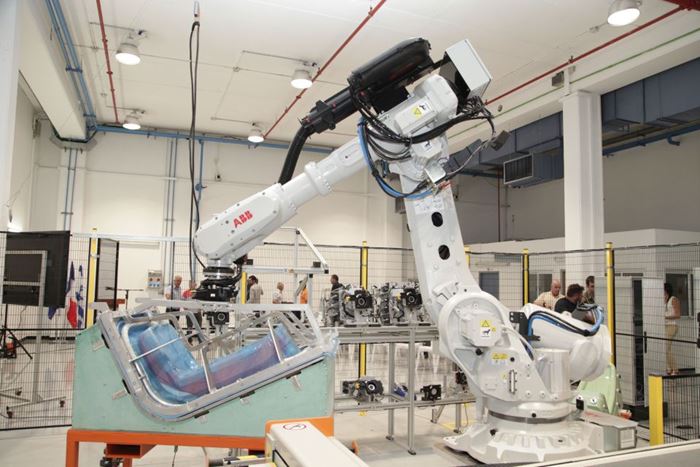
















.jpg;maxWidth=300;quality=90)






